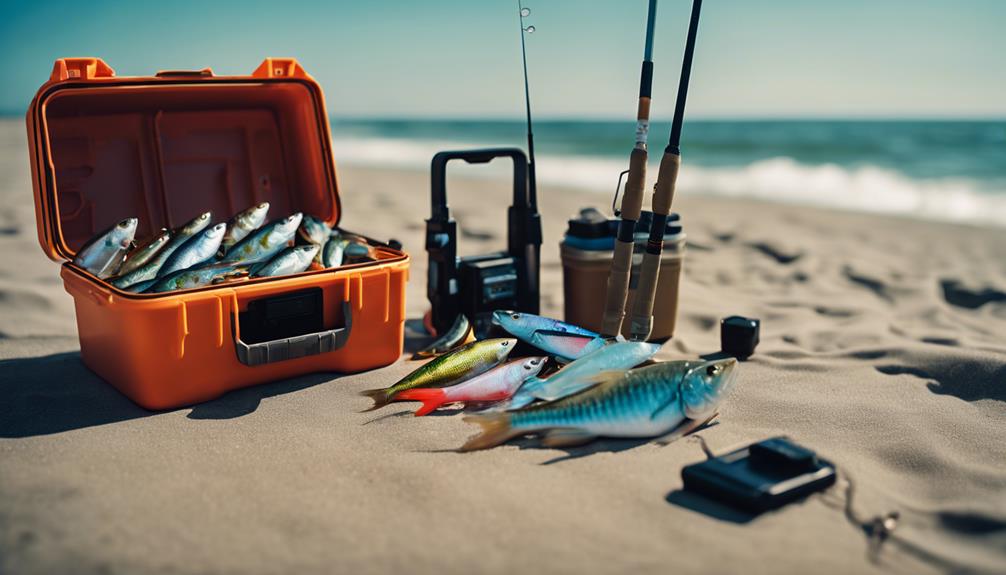When it comes to fishing, there’s a certain charm and skill involved in fly fishing that makes it unique compared to other fishing methods. Understanding what a fly for fishing is, how to choose the right one, and the techniques to master it can significantly enhance your fishing experience. In this comprehensive guide, we’ll delve into the various aspects of using a fly for fishing, ensuring you have all the information you need to become a proficient angler.
What is a Fly for Fishing?
A fly for fishing is a type of artificial lure used in the sport of fly fishing. Unlike conventional fishing methods that employ bait or heavier lures, flies are lightweight and designed to mimic the natural food sources of fish, such as insects or small baitfish. The art of fly tying allows anglers to create flies from various materials, including feathers, fur, and synthetic fibers, enabling them to replicate the colors, shapes, and movements of the aquatic life that fish are naturally drawn to. Understanding the different types of flies and their uses is crucial for any angler looking to be successful in fly fishing.
Types of Flies for Fishing: A Beginner’s Overview
There are primarily two categories of flies: dry flies and wet flies. Dry flies float on the water’s surface and imitate insects that are resting or hatching. They are designed to sit on top of the water, enticing fish to strike. Common examples include mayflies and caddisflies. Wet flies, on the other hand, are designed to sink below the surface and mimic aquatic insects or small fish. These flies are ideal for fishing deeper waters where fish may be lurking. Understanding the differences between these types of flies for fishing will help you choose the right one based on the conditions and the target species.
Choosing the Right Fly for Fishing Conditions
Selecting the appropriate fly for fishing conditions is a critical skill for successful anglers. Factors such as the time of year, water temperature, and the types of insects present all play a role in determining which fly to use. For instance, in spring, trout may be more attracted to mayflies, while in summer, terrestrials like grasshoppers might be more effective. Additionally, observing the behavior of fish and the insects around the water can provide valuable clues for choosing the right fly. It’s essential to do your research and adapt your fly selection to match the current fishing conditions.
Essential Gear for Fly Fishing
To effectively use a fly for fishing, you’ll need the right gear. A fly rod, fly reel, and fly line are essential components of your setup. The rod’s length and weight should match the type of fishing you plan to do, while the reel should be able to hold enough line and provide a smooth drag system. Fly lines come in various types, including floating, sinking, and intermediate lines, and each type is suited for specific fishing scenarios. Additionally, investing in a quality leader and tippet line is crucial for presenting your fly effectively. Ensuring you have the right gear will greatly enhance your chances of success on the water.
Techniques for Casting a Fly for Fishing
Mastering the casting technique is vital when using a fly for fishing. The most common method is the forward cast, where you lift the rod and then thrust it forward while letting the line unfurl behind you. This motion allows the fly to land softly on the water’s surface, mimicking a natural insect landing. Other techniques, such as the roll cast and double haul, can help you cast in challenging conditions, like when there are obstructions or strong winds. Practicing these techniques will not only improve your casting distance and accuracy but will also increase your chances of catching fish.
Reading the Water: Where to Fly Fish
Knowing where to cast your fly for fishing is as important as selecting the right fly. Different fish species prefer different habitats, and understanding how to read the water can make all the difference. Look for areas with structure, such as rocks, logs, or vegetation, where fish are likely to hide. Additionally, current seams, eddies, and pools are excellent spots to target. Observing the surface for rising fish or insects can also guide your casting location. Learning to read the water will help you identify productive fishing spots and improve your chances of landing a catch.
Maintaining Your Flies for Fishing Success
Proper maintenance of your flies for fishing is essential for ensuring they remain effective. After each use, inspect your flies for any damage or wear. Remove any debris or water from the fly and store them in a dry, cool place to prevent deterioration. If you notice that some of your flies are starting to lose their shape or color, consider re-tying them or replacing them. Additionally, keeping your fly box organized will help you quickly find the right fly when you need it. By maintaining your flies, you’ll be better prepared for your next fishing adventure.
Conclusion: Embrace the Art of Fly for Fishing
Fly fishing is not just a method of catching fish; it’s an art form that combines skill, patience, and a deep appreciation for nature. By understanding the types of flies for fishing, honing your casting techniques, and learning to read the water, you can significantly enhance your fly fishing experience. Remember that practice makes perfect, and don’t hesitate to seek advice from experienced anglers or local fishing communities. Embrace the journey of mastering the art of fly fishing, and you’ll find the rewards are well worth the effort.
In summary, the world of fly fishing is rich with opportunities to connect with nature and experience the thrill of the catch. Equip yourself with the right knowledge, gear, and techniques, and you’ll be well on your way to becoming a successful fly fisherman. Whether you’re a novice or an experienced angler, there’s always something new to learn in the enchanting realm of fly for fishing. Happy fishing!
